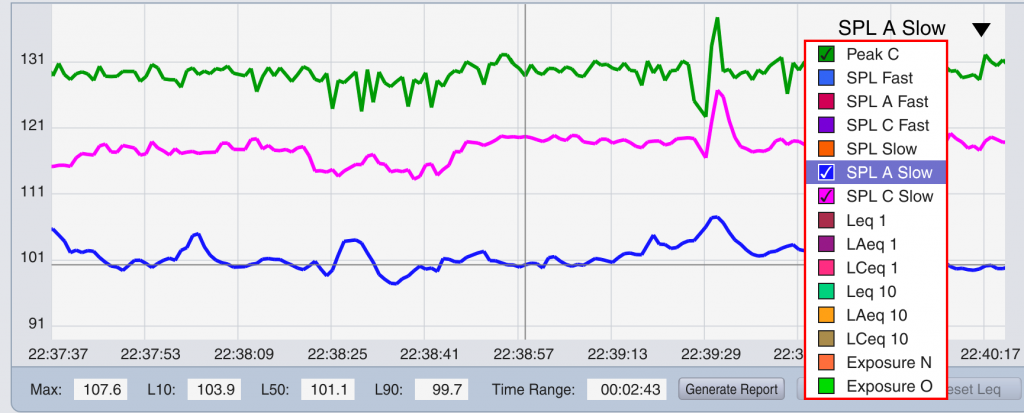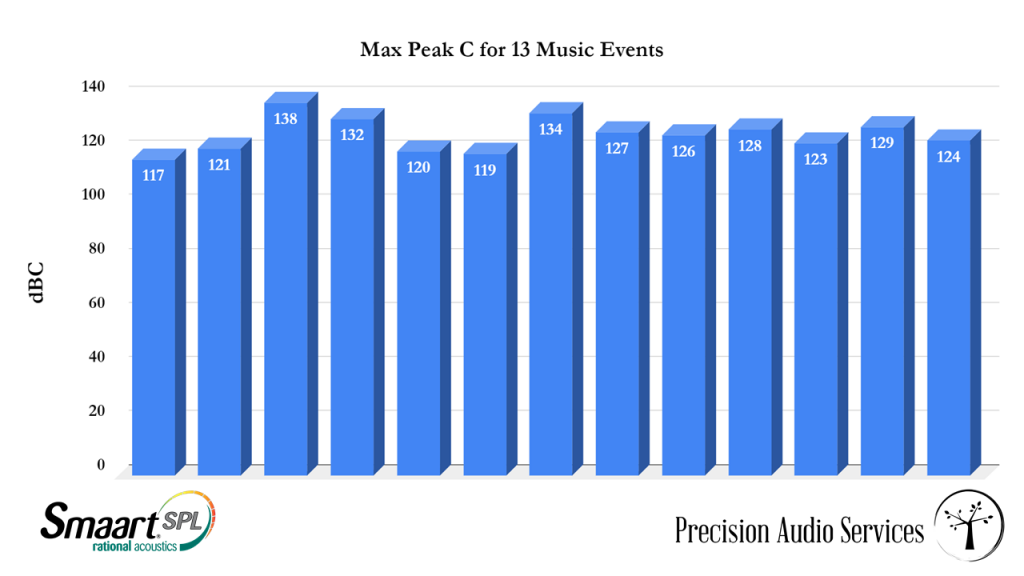A hidden consideration when choosing a mic and interface for SPL monitoring rigs
One thing that doesn’t usually come into play for general measurement work, but is mission critical for SPL measurements, is headroom. This is a two-part concern.
Max SPL
To perform properly at concert levels, the measurement mic should be able to withstand levels of up to 140 dB SPL. Many measurement mics hit severe distortion / physical overload before that point.
That number sounds like overkill, but it’s probably not. Instantaneous, unweighted Peak levels can be a lot higher than the time-integrated A or C weighted SPL values we’re used to seeing on our meters (but it’s the full-spectrum peaks that clip the mic). This example shows how the Peak C values (green) can be 15 – 30 dB higher than SPL C and A Slow values during a show:

This show hit a maximum of 138 dB Peak C, and at those levels, some measurement mics have their diaphragms literally bottoming out.
I reviewed SPL logs from 13 recent music concerts to see what the range of Peak C values was like.

Depending on the program material, mics with Max SPL limits in the low 130 range will run into trouble at louder shows. For traditionally quieter genres such as bluegrass, jazz, spoken word, etc, a mic that can handle up to the mid 120’s may be sufficient.
Check the mic’s published specs for Max SPL info (sometimes stated as 1% THD). Some measurement mics will overload as low as 120 dB SPL, which is not sufficient for concert-level measurements.
Mic Sensitivity / Preamp Max Input Voltage
At concert levels, the mics produce substantial voltage, which can overload some device preamps. At full tilt, an Earthworks M30 is producing almost +19 dBu, which is well into Line Level territory and will overload the mic preamps on many interfaces. For SPL tasks I recommend using a lower-sensitivity mic like the iSEMcon EMX-7150 (6 mV/Pa).
An overload during data logging invalidates both the instantaneous measurement and any Leq measurements. Since an overload flushes Leq buffers to dump the invalid data, even an occasional overload can be problematic with longer Leq measurements.
To avoid buyer’s remorse, check the Max SPL specs on your mic of choice, and then make sure the output voltage it produces at that level won’t overload the preamps on your chosen IO device. Otherwise, you’ll need a different mic/interface combination or an inline pad. (Be aware that an inline pad causes a drop in Phantom Power voltage, which lowers the clipping point of your mic, and that can cause you to chase your tail and end up back where you started. For that reason, a pad might not be a good solution.)